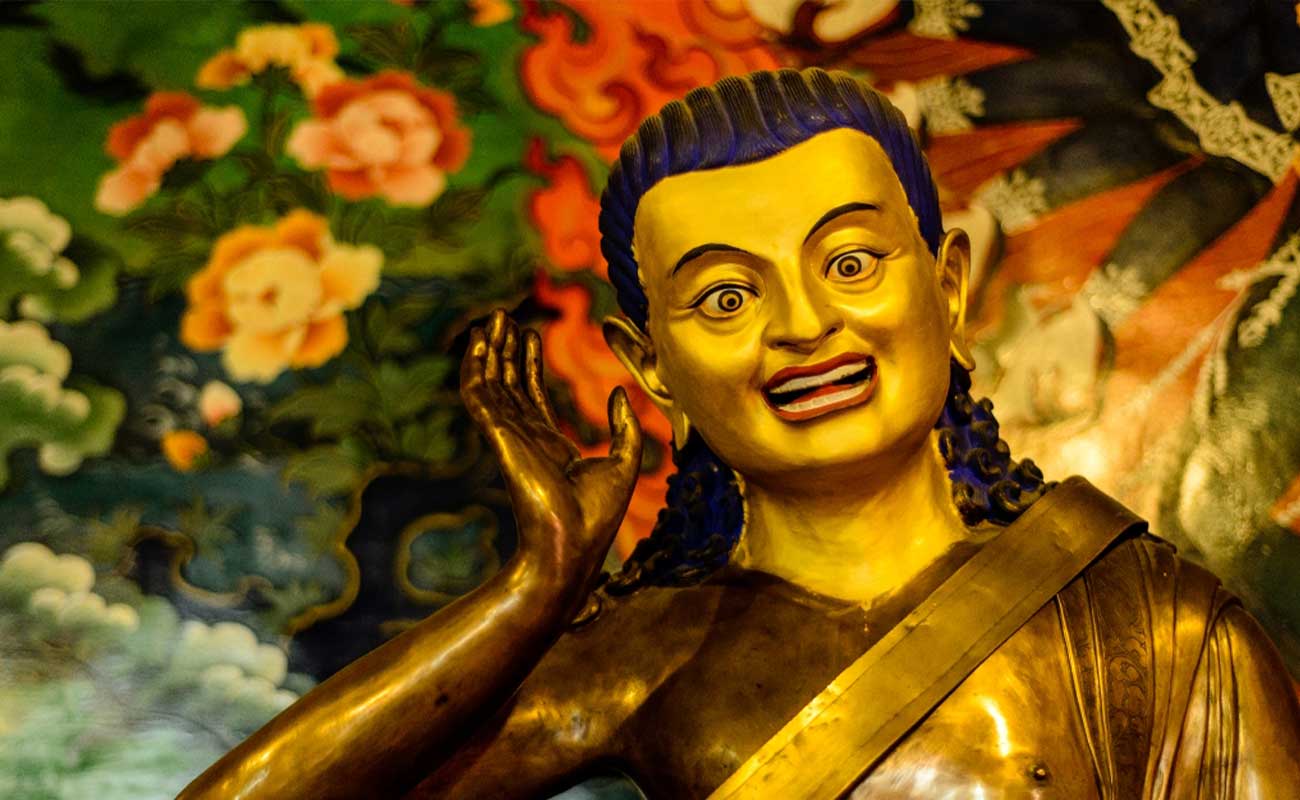Mahamudra, a profound meditation practice originating from the Indian Buddhist tradition, has become a cornerstone of spiritual development in both Tibetan and Mahayana Buddhism. In this article, we will delve into the origins, principles, and benefits of Mahamudra, as well as address common questions and misconceptions surrounding this transformative practice.

Introduction to Mahamudra
Mahamudra, which translates to "the great seal" or "the great gesture," is a contemplative practice that aims to uncover the fundamental nature of mind and reality. It is considered a direct path to realizing the nature of enlightenment and attaining liberation from suffering.
Historical Background
The roots of Mahamudra can be traced back to the Indian Buddhist masters Saraha and Tilopa, who transmitted the teachings to the renowned Tibetan yogi, Milarepa. Milarepa, in turn, became the lineage holder and passed on the practice to his disciple Gampopa, the founder of the Kagyu lineage in Tibetan Buddhism.
The Meaning and Significance of Mahamudra
Mahamudra refers to the direct realization of the ultimate nature of mind and phenomena, transcending conceptual elaborations and dualistic thinking. It is often described as the union of wisdom and compassion, where the practitioner recognizes the inseparability of emptiness and compassionate action.
Mahamudra in Tibetan Buddhism
The Kagyu Lineage and Mahamudra
Within Tibetan Buddhism, Mahamudra holds a central position in the Kagyu lineage. It is considered the pinnacle of meditation practices and is passed down through an unbroken lineage of realized masters.
The Four Yogas of Mahamudra
The practice of Mahamudra in the Kagyu tradition encompasses the Four Yogas, which provide a comprehensive framework for spiritual development. These four stages include the yoga of one-pointedness, the yoga of simplicity, the yoga of one taste, and the yoga of non-meditation.
The Practice of Mahamudra Meditation
Mahamudra meditation involves resting the mind in its natural state, free from conceptual elaboration. The practitioner learns to recognize and abide in the nature of mind, which is inherently clear, aware, and non-dual.
Mahamudra in the Indian Buddhist Tradition
While Mahamudra is predominantly associated with Tibetan Buddhism, its roots can be found in the Mahayana tradition of Indian Buddhism.
Mahamudra in the Mahayana Tradition
In Mahayana Buddhism, Mahamudra is considered a profound realization of emptiness, the understanding that all phenomena lack inherent existence. It is seen as the direct path to enlightenment, enabling practitioners to cut through delusion and awaken to the true nature of reality.
The Teachings of Saraha and Tilopa
Saraha and Tilopa, Indian Buddhist masters from the 8th and 10th centuries, respectively, were instrumental in transmitting the teachings of Mahamudra. Their experiential instructions emphasized the direct perception of mind and paved the way for the subsequent development of Mahamudra practice.
Core Principles of Mahamudra
Mahamudra practice rests upon several core principles that form the foundation of this profound meditation tradition.
Emptiness and Non-duality
At the heart of Mahamudra lies the recognition of emptiness, the understanding that all phenomena lack inherent existence. This realization leads to a direct experience of non-duality, where subject and object merge into an undifferentiated whole.
Direct Perception of Mind
Mahamudra encourages the direct perception of mind, bypassing conceptual thinking and intellectual analysis. By resting in pure awareness, practitioners can access the unobstructed nature of mind and experience its innate qualities.
Transcending Concepts and Dualistic Thinking
Through Mahamudra, one learns to transcend concepts and dualistic thinking, realizing that all thoughts and perceptions are temporary and devoid of inherent reality. This insight liberates the practitioner from attachment and aversion, cultivating equanimity and genuine freedom.
Benefits of Practicing Mahamudra
The practice of Mahamudra offers numerous benefits for individuals seeking spiritual growth and inner transformation.
Developing Clarity and Insight
Mahamudra meditation cultivates clarity of mind and deep insight into the nature of reality. By directly perceiving the nature of mind, practitioners gain profound understanding and wisdom, allowing them to navigate life's challenges with clarity and discernment.
Overcoming Negative Emotions and Mental Patterns
Mahamudra practice provides a powerful tool for transforming negative emotions and mental patterns. Through mindfulness and awareness, practitioners can recognize the arising of thoughts and emotions and develop the capacity to let go of habitual patterns that cause suffering.
Cultivating Compassion and Wisdom
Mahamudra's emphasis on non-duality and the inseparability of wisdom and compassion enables practitioners to cultivate a profound sense of compassion for all beings. This compassion arises from the recognition that all beings share the same fundamental nature and are interconnected.
Challenges and Misconceptions About Mahamudra
While Mahamudra offers profound benefits, it is not without its challenges and misconceptions.
Complexity of the Practice
Mahamudra practice can initially seem complex and abstract, requiring guidance from a qualified teacher to navigate its intricacies. However, with dedication and proper instruction, the practice gradually unfolds and becomes accessible to sincere practitioners.
Misunderstanding Emptiness and Non-duality
The concept of emptiness and non-duality can be easily misunderstood, leading to misconceptions about the practice. It is crucial to receive accurate teachings and guidance from an authentic Mahamudra teacher to avoid falling into philosophical misunderstandings.
The Role of a Mahamudra Teacher or Guru
In Mahamudra practice, the role of a qualified teacher or guru is of utmost importance.
Importance of Lineage and Transmission
Mahamudra teachings are passed down through an unbroken lineage of realized masters, ensuring the authenticity and efficacy of the practice. The guidance of a qualified teacher who has received the transmission from their own guru is essential for deepening one's understanding and experience of Mahamudra.
Finding a Qualified Mahamudra Teacher
Finding a qualified Mahamudra teacher requires diligent research and discernment. Seek out teachers who possess genuine realization, have a strong lineage connection, and embody the qualities of wisdom, compassion, and ethical conduct.
Integrating Mahamudra into Daily Life
Mahamudra is not confined to formal meditation sessions but can be integrated into daily life for continuous practice and transformation.
Applying Mindfulness and Awareness
Practitioners are encouraged to cultivate mindfulness and awareness throughout their daily activities. By bringing the qualities of presence and non-dual awareness to every moment, individuals can experience the profound transformative power of Mahamudra in their daily lives.
Balancing Meditation and Action
Mahamudra practice involves finding a balance between formal meditation sessions and active engagement with the world. By integrating meditation and compassionate action, practitioners can harmonize their spiritual practice with their responsibilities and relationships.
Common Questions About Mahamudra
Here are answers to some common questions and concerns regarding Mahamudra practice:
Is Mahamudra suitable for beginners?
Mahamudra can be practiced by individuals of various levels of experience. While it may initially seem daunting, beginners can benefit from receiving proper guidance and gradually developing their practice.
How long does it take to see results from Mahamudra practice?
The timeframe for experiencing the results of Mahamudra practice varies for each individual. Consistent practice, guided by a qualified teacher, is essential. Over time, practitioners can expect to see profound shifts in their clarity of mind, emotional well-being, and perception of reality.
Can Mahamudra be practiced by people of any religion?
Mahamudra is a meditation practice that transcends religious boundaries. It can be practiced by individuals from different religious backgrounds, as it focuses on direct realization and the nature of mind rather than adherence to specific dogmas or rituals.
Is it necessary to have a guru for Mahamudra practice?
While Mahamudra practice can be supported by personal study and exploration, the guidance of a qualified guru is highly recommended. A guru provides the necessary instructions, transmissions, and personal guidance to navigate the intricacies of Mahamudra practice.
Are there any risks or side effects associated with Mahamudra?
Mahamudra is a contemplative practice that, when approached with sincerity and proper guidance, does not pose any inherent risks or side effects. However, it is essential to practice within one's capacity and seek guidance from a qualified teacher to address any challenges that may arise during the practice.
Conclusion of Mahamudra
Mahamudra is a profound meditation practice that holds the potential to unlock inner freedom and profound wisdom. Rooted in both Tibetan and Indian Buddhist traditions, Mahamudra offers a direct path to realizing the nature of mind and transcending conceptual limitations. By integrating Mahamudra into daily life, individuals can cultivate clarity, compassion, and insight, leading to a profound transformation of their being.
Unlock the potential of Mahamudra and embark on a journey of self-discovery and spiritual growth. You can find more in Study Buddhism
FAQs on Mahamudra
Q1: Can I practice Mahamudra without any prior meditation experience?
A1: While prior meditation experience can be helpful, it is not a strict requirement. Mahamudra can be practiced by individuals at various levels of experience, and with the guidance of a qualified teacher, beginners can embark on this transformative path.
Q2: How long should I meditate daily to practice Mahamudra effectively?
A2: The duration of daily meditation can vary depending on personal circumstances and commitments. It is recommended to start with shorter sessions and gradually increase the duration as one becomes more comfortable. Consistency and quality of practice are more important than the length of each session.
Q3: Can Mahamudra help with reducing stress and anxiety?
A3: Yes, Mahamudra practice can be beneficial for reducing stress and anxiety. By cultivating mindfulness, awareness, and insight, individuals can develop a healthier relationship with their thoughts and emotions, leading to increased inner peace and well-being.
Q4: Is Mahamudra a religious practice?
A4: While Mahamudra has its roots in Buddhist traditions, it is not limited to any particular religion. It is a contemplative practice that focuses on direct realization and the nature of mind. Individuals from different religious backgrounds can benefit from Mahamudra practice.
Q5: What is the best way to find a qualified Mahamudra teacher?
A5: Finding a qualified Mahamudra teacher requires careful research and discernment. Seek recommendations from trusted sources, explore reputable Buddhist centers, and consider attending teachings or retreats to get a sense of the teacher's authenticity and compatibility with your own spiritual path.
About Tibet Travel & Tours
Tibet Travel & Tours is a local travel agency in Tibet that offers unique and authentic experiences to travelers from all around the world. As a leading tour operator in Tibet, we provide high-quality Tibet Travel services that are tailored to our clients' needs and preferences.
Our team of experienced and knowledgeable professionals strives to ensure that our clients have a hassle-free and memorable trip in Tibet. We specialize in various types of tours, including cultural tours, trekking and hiking tours, and adventure tours.
Our commitment to providing exceptional service has earned us a reputation as one of the best local travel agencies in Tibet. Contact us today to plan your unforgettable trip to Tibet.
Explore Tibet with a local Tibetan Travel Agency
If you're looking to explore Tibet, starting your journey with a reputable Tibetan travel agency in Tibet is crucial. Tibet Travel & Tours is a great choice to begin your adventure with their extensive knowledge of the region and commitment to responsible tourism.
Their Tibet tour packages cater to a range of interests and budgets, making it easy to plan a trip that suits your needs. Before embarking on your tibet tour, it's essential to have the right Tibet travel information and necessary documents, including a Tibet travel permit.
The Tibet Travel Planner provided by i-Tibet travel is an excellent resource to plan your trip, including tips on what to pack, where to stay, and what to see.
For beginners, the "About Tibet" guide provided by i-Tibet travel offers a comprehensive overview of the region's history, culture, and top attractions. So, start your Tibet travel plan here with i-Tibet travel and discover the magic of Tibet for yourself.









